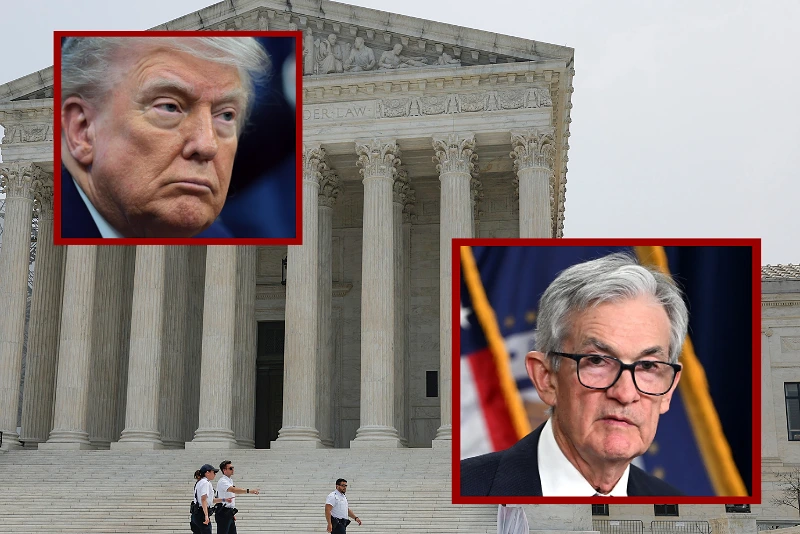
OAN Staff Brooke Mallory
3:45 PM – Friday, May 23, 2025
On Thursday, the Supreme Court granted a request from the Trump administration that permits the president to dismiss any members of independent federal agencies that he chooses. However, the High Court also indicated that its ruling does not extend to the Federal Reserve.
This decision reinforces a temporary order issued on April 9th, which enabled President Donald Trump to remove Gwynne Wilcox from the National Labor Relations Board and Cathy Harris from the Merit Systems Protection Board — both appointed by former President Joe Biden.
“The stay reflects our judgment that the government is likely to show that both the NLRB and MSPB exercise considerable executive power,” the court stated in an unsigned order.
Advertisement
It “faces greater risk of harm from an order allowing a removed officer to continue exercising the executive power than a wrongfully removed officer faces from being unable to perform her statutory duty,” they continued.
Unsurprisingly, the Supreme Court’s three liberal justices dissented from the majority opinion.
In a particularly significant section, SCOTUS distinguished the matter at hand from any hypothetical effort by President Donald Trump to dismiss members of the Federal Reserve, including its chair, Jerome Powell.
The justices argued that the Federal Reserve is a “uniquely structured, quasi-private institution” with a distinct historical legacy and operational framework that cannot be touched.
The Supreme Court’s remarks are likely to be welcomed by global markets, which experienced slight volatility after Trump criticized Powell in late March and early April, fueling speculation that he might attempt to remove him from office.
On April 17th, Trump intensified those assumptions by declaring on Truth Social that Powell’s “termination cannot come fast enough.” However, he subsequently appeared to deescalate the situation, stating that he had “no intention” of dismissing Powell.
Liberal Justice Elena Kagan, writing for the dissenting group, stated that the High Court had effectively invalidated a crucial 1935 decision, Humphrey’s Executor v. United States, which established the concept of autonomous agencies that are not directly subject to presidential control.
In “defying that precedent,” she argued that Trump decided “to take the law into his own hands” by firing Wilcox and Harris.
“Today, this court effectively blesses those deeds. I would not. Our Humphrey’s decision remains good law, and it forecloses both the President’s firings and the Court’s decision to award emergency relief,” Kagan wrote.
She also noted that she was perplexed by the court’s effort to make an exemption for the Federal Reserve, arguing that there is no reason why the same legal reasoning would not apply to it.
“If the idea is to reassure the markets, a simpler — and more judicial — approach would have been to deny the president’s application for a stay,” Kagan added.
The case presents a pivotal legal question: whether Congress, in establishing federal agencies, may include statutory protections that shield agency officials from political influence by restricting the president’s authority to remove them at will.
While the immediate dispute involves the dismissal of officials from only two agencies, a ruling that affirms broad presidential removal power could have notable implications across the federal bureaucracy.
Such a precedent could also inevitably prompt renewed scrutiny of whether the president possesses the authority to dismiss members of the Federal Reserve—an institution long regarded as operating independently from direct executive control.
The Trump administration embraced legal arguments advanced by Constitutional scholars who advocate for a robust interpretation of executive authority. Central to their argument is the assertion that independent agencies, as currently structured, “undermine democratic accountability by insulating themselves from presidential oversight”—an arrangement they maintain is incompatible with the Constitution’s separation of powers.
Stay informed! Receive breaking news blasts directly to your inbox for free. Subscribe here. https://www.oann.com/alerts

















